Amidst all the great pulp thrills and features in Sky Fighters, they ran a true story feature collected by Ace Williams wherein famous War Aces would tell actual true accounts of thrilling moments in their fighting lives! This time we have Canadian Flyer with the R.C.F.—Lieutenant Colonel William Barker’s most thrilling sky fight!
The plain unvarnished truth  of William Barker’s career on two flying fronts reads more like fiction than fact. Born in the prairie province of Manitoba in 1894, he enlisted as a Private in the Canadian Army at the age of 19. He served in the cavalry before transferring to the flying corps. Barker began as a simple private. But he skyrocketed swiftly through all the grades to that of Lieut. Colonel. His training for a pilot was limited to two flights with an instructor. After that he was turned loose to begin piling up an amazing record. On October 27, 1918, he crowned this amazing record with the most astounding aerial feat of the whole war . . . fighting and escaping from a surrounding net of 6O enemy planes at the dizzy altitude of 20,000 feet.
of William Barker’s career on two flying fronts reads more like fiction than fact. Born in the prairie province of Manitoba in 1894, he enlisted as a Private in the Canadian Army at the age of 19. He served in the cavalry before transferring to the flying corps. Barker began as a simple private. But he skyrocketed swiftly through all the grades to that of Lieut. Colonel. His training for a pilot was limited to two flights with an instructor. After that he was turned loose to begin piling up an amazing record. On October 27, 1918, he crowned this amazing record with the most astounding aerial feat of the whole war . . . fighting and escaping from a surrounding net of 6O enemy planes at the dizzy altitude of 20,000 feet.
With one leg useless, shattered by an explosive bullet, one elbow torn away by another, and two bullet wounds in his abdomen, he nevertheless maneuvered his plane in such a masterful manner that he downed 4 enemy aircraft and managed to escape to his own side of the lines. For this, his last and most terrific fight against stupendous odds, he was awarded the Victoria Cross. When he departed from the front he ranked fifth among the British Aces with 50 official victories. He was killed in an airplane accident 12 years after the war. Barker picked the following encounter as the most thrilling of his experiences.
WHIPPING THE FLYING CIRCUS
by Lieut. Col. William Barker• Sky Fighters, September 1935
WHEN I was assigned to the 28th Squadron, I was made a flight commander. I decided on an immediate test to prove my right to the assignment. Richthofen’s Flying Circus was operating in our area, the Hauptmann himself was away on leave, but those remaining to carry on were crack air fighters. I called my boys together for a foray over their lines.
It was late afternoon and the ceiling was less than 1,000 feet, but I picked my way across the lines by following the Memi road, vaguely discerned below by the twin rows of tall poplars on either side. Malloch, a high caste Indian, who always insisted on wearing his colorful turban with his regulation uniform, flew at my right. Fenton was at my left. Three other boys filled in the rear, 6 of us in all.
For almost an hour we dodged back and forth among clouds behind the Hun lines without having any luck. Our Sop Camels were ticking along smoothly but somewhat futilely . . . when suddenly it happened! We had slid from a cloud only to run smack into the whole Flying Circus. Malloch was closest and drew fire first, three Fokkers of dazzling hue pouncing in on him simultaneously. I split-aired to his assistance and cleaved the Hun attackers in two. But another Hun arrowed from nowhere, fastened on my tail and began pumping hot lead.
Diving for the Earth
I kicked rudder abruptly, glanced swiftly at the sky and ground, came to a sudden decision. I could spin or turn my light-engined Sop Camel on a half penny. The Fokker with its weighty Mercedes motor in the blunt nose was heavier and faster. The ceiling was low. I decided on a new adaptation of an old trick. Pushing the stick forward I dived for the all too close earth with full sauce. The Hun peppered away at my tail and I let him have it. When my lower wingtips almost touched the topmost leaves of the waving poplars I tugged the stick abruptly and went into a tight loop.
An old trick, yes. And easily countered—usually! It had been worn thin since Ball first used it two years before. But this was a new adaptation at an ungodly low altitude! The heavier Fokker couldn’t follow me. I came out sitting smack on his tail with my sights on the back of the pilot’s helmet. One Vickers burst was enough. The pilot crumpled over the controls and the Fokker fell.
I zoomed up again, just missed being hit by a tumbling Fokker coming down in flames. Fenton was going at it with two Huns. I lured one of them away by flashing my tail in his face. We went around and ’round in an ever tightening circle. The Spandau bursts swept harmlessly beneath my trucks. The Hun pilot was not able to bend his Fokker far enough to get my range. That was where our Camels were superior to the Fokkers. While circling that way I slid off on a wing nearer and nearer to the ground. When I could descend no farther I straightened out and let my antagonist line me in his sights. With his first burst I pulled up and went over in a loop to come out on the Fokker’s tail. Two bursts accounted for it. It exploded in flames. The pilot was a victim of the same trick I had pulled on the first Hun.
Four Missing Men
It was too dark now for further fighting and my squadron mates had swept away through the clouds, I could see neither friend nor enemy anywhere, so I turned homeward. Malloch was there when I landed. He reported getting one Hun. I had downed two. But four of my mates were missing! It was a sad and bitter ending to my first encounter with the Circus.
Later on, however, Fenton phoned in from a nearby field where he had been forced to land in the darkness and reported a victory. Two others had landed with him, but one of my men would never return. Fenton had seen him fall in flames behind the German lines. But I had won my first joust as a single-seater flight commander. The final score was 4 to 1 in our favor. But what pleased me most was the working out of my new tactic.
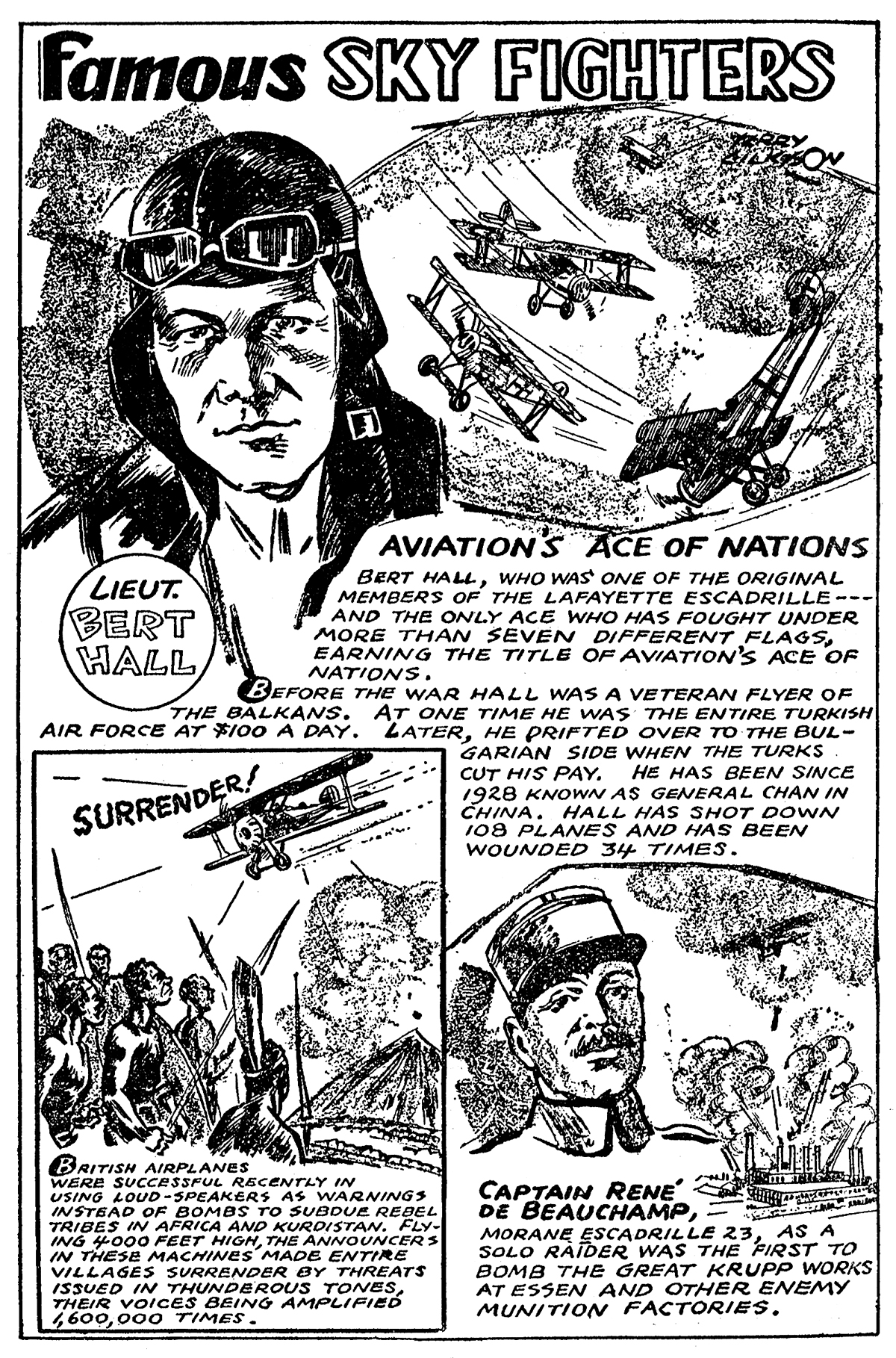
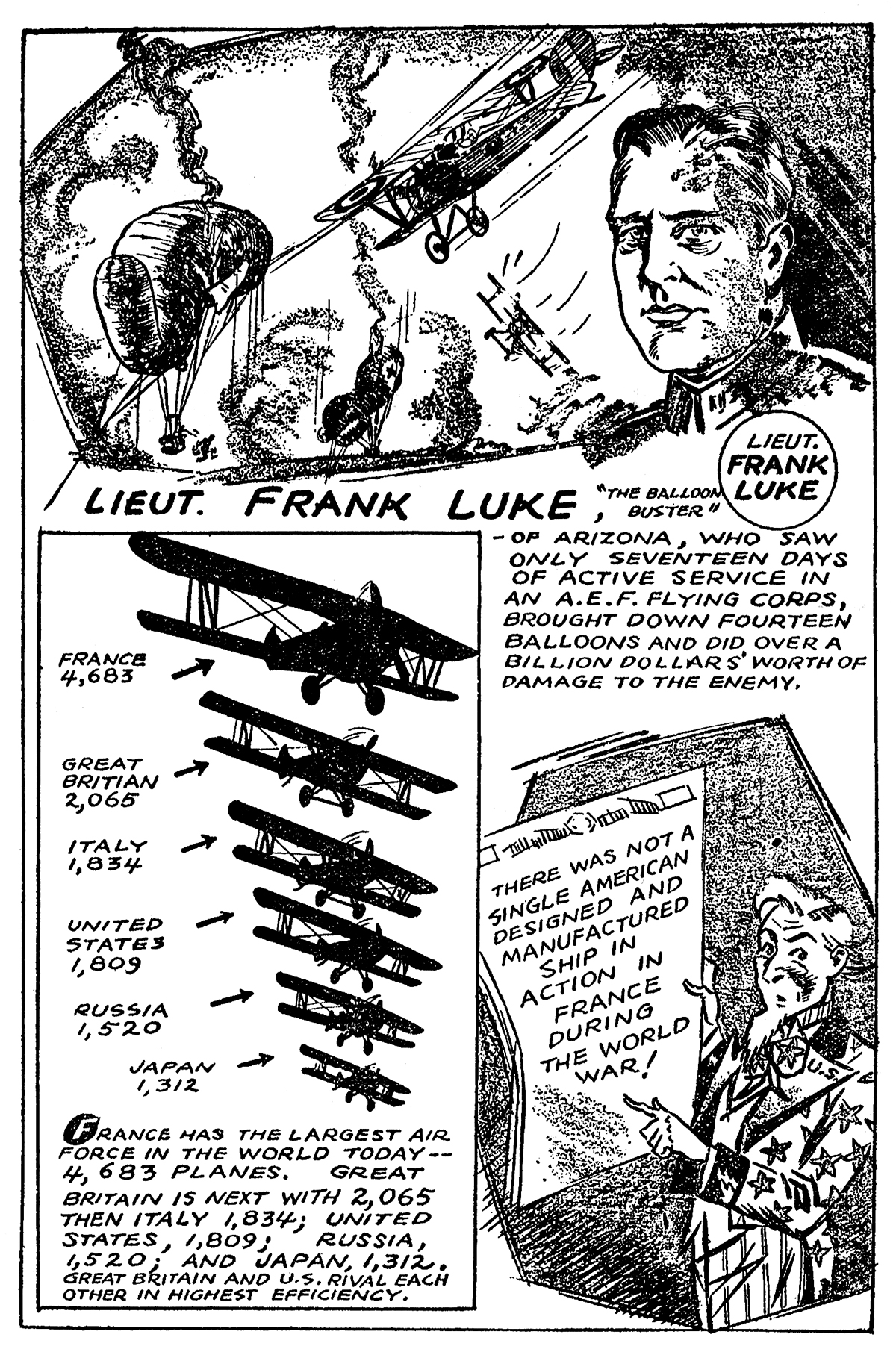





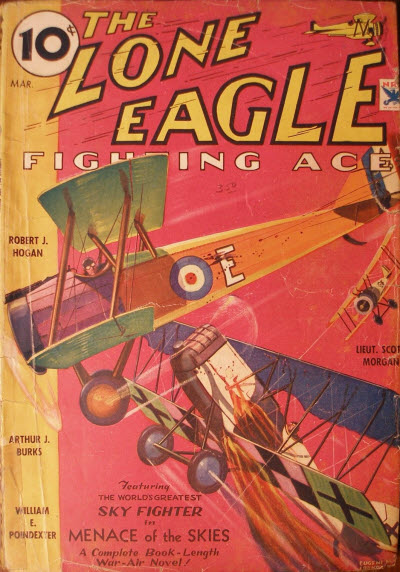 a story from the prolific pen of Mr. Robert J. Hogan—the author of
a story from the prolific pen of Mr. Robert J. Hogan—the author of  of fortune. Born and raised In Aaheville, N. Carolina, young Rockwell got the wanderlust soon after graduating from the University of Virginia. When the Germans made their surprise move on the forts of Liege, Rockwell was serving in the ranks of the Foreign Legion. For a heroic exploit in hand to hand bayonet fighting, he was awarded the Medaille Militaire. For a whole year he served with the Foreign Legion in the trenches, then transferred to the aviation and went into training at Avord. When Norman Prince formed the first American Flying Squadron in Paris, Rockwell was one of those invited to join. He proved out to be one of the best and most daring pilots of that original band. His career was cut short by his untimely death on September 23rd, 1916.
of fortune. Born and raised In Aaheville, N. Carolina, young Rockwell got the wanderlust soon after graduating from the University of Virginia. When the Germans made their surprise move on the forts of Liege, Rockwell was serving in the ranks of the Foreign Legion. For a heroic exploit in hand to hand bayonet fighting, he was awarded the Medaille Militaire. For a whole year he served with the Foreign Legion in the trenches, then transferred to the aviation and went into training at Avord. When Norman Prince formed the first American Flying Squadron in Paris, Rockwell was one of those invited to join. He proved out to be one of the best and most daring pilots of that original band. His career was cut short by his untimely death on September 23rd, 1916.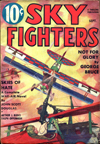
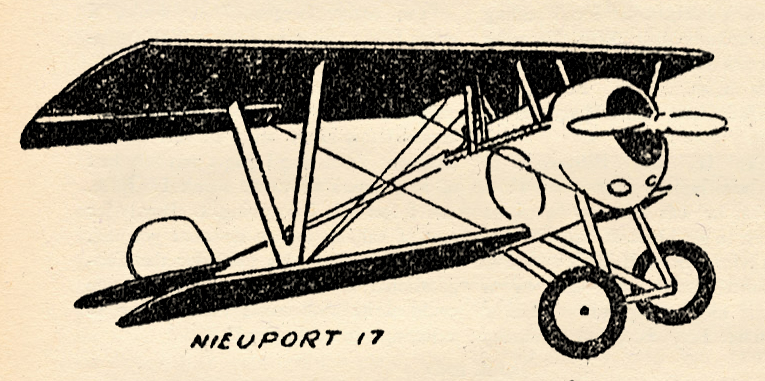
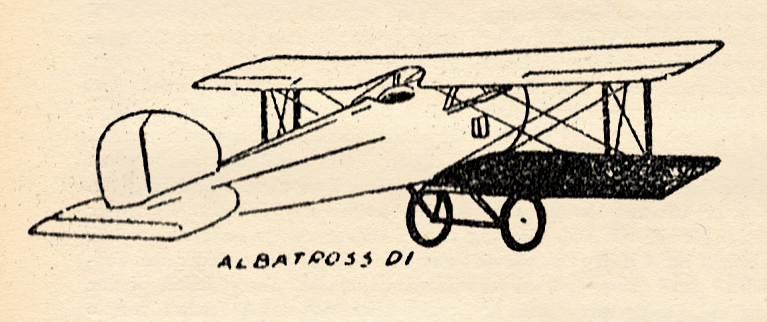
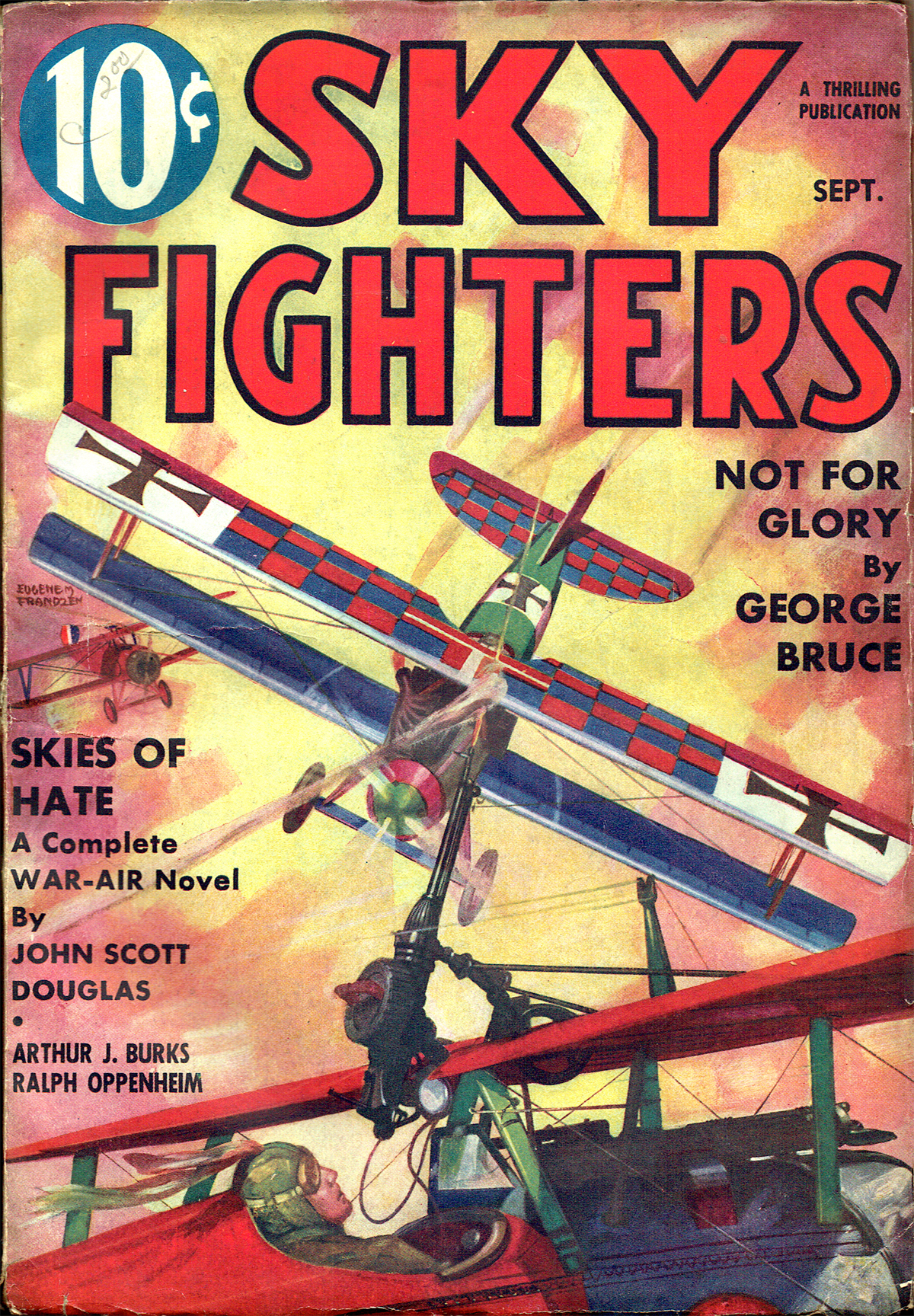
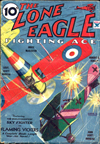
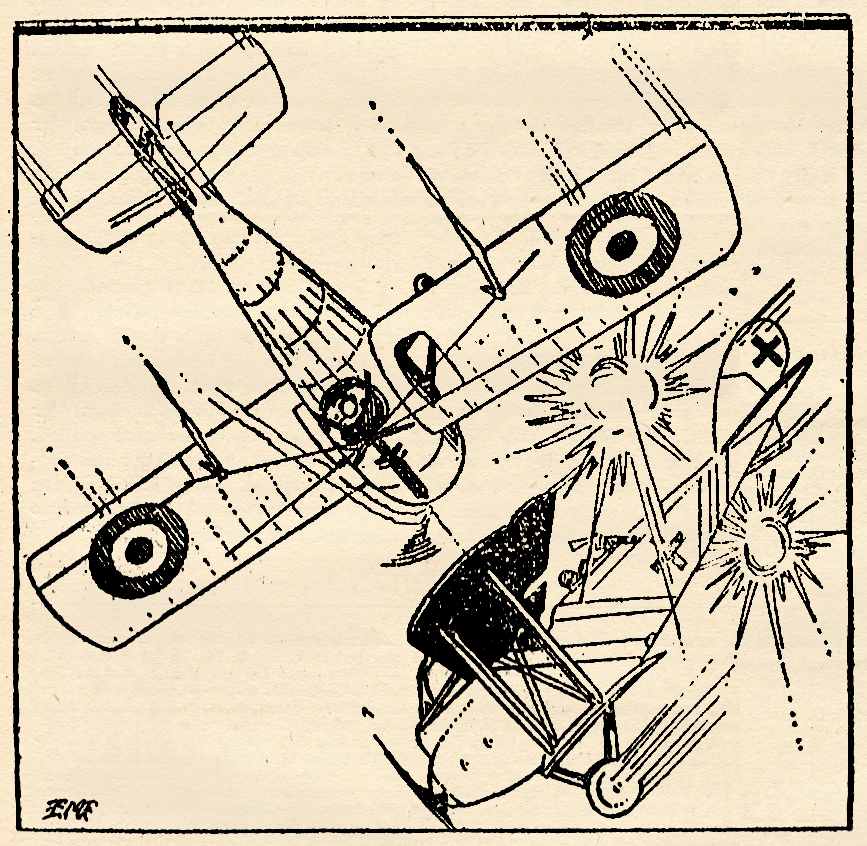
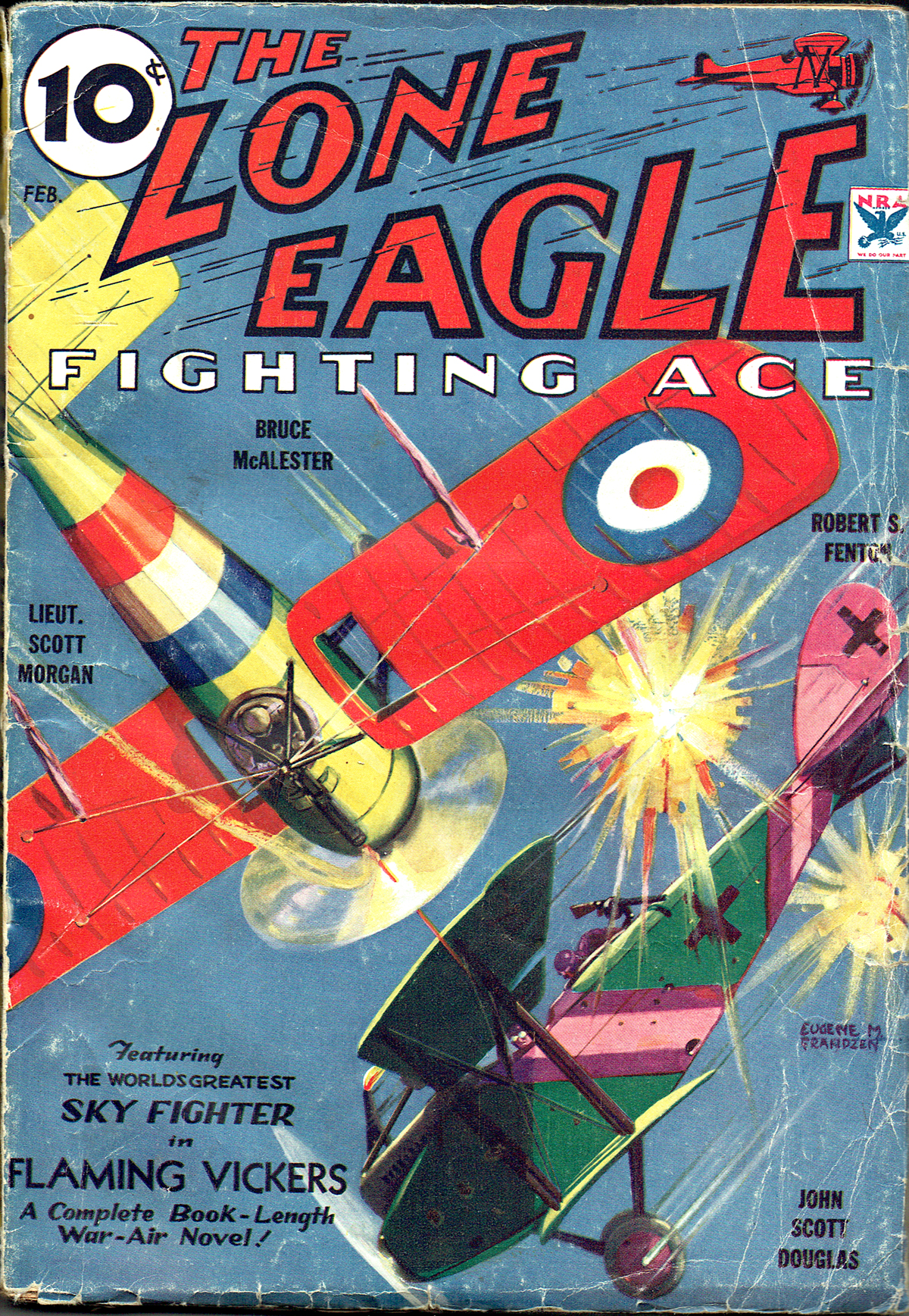
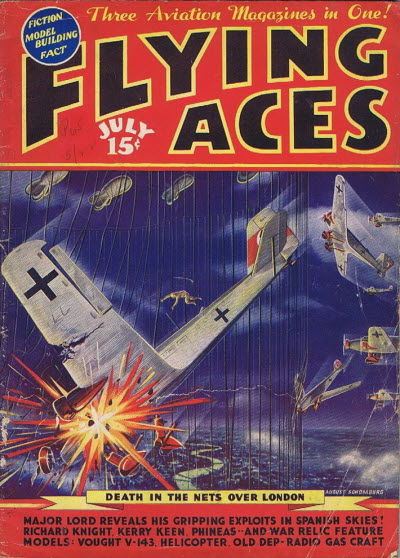 had a story in a majority of the issue of Flying Aces from his first in January 1930 until he returned to the Navy in 1942. Starting in August 1931, they were stories featuring the weird World War I stories of Philip Strange. But in November 1936, he began alternating these with sometime equally weird present day tales of espionage Ace Richard Knight—code name Agent Q. After an accident in the Great War, Knight developed the uncanny ability to see in the dark. Aided by his skirt-chasing partner Larry Doyle, Knights adventures ranged from your basic between the wars espionage to lost valley civilizations and dinosaurs. Knight is sent to Spain to get the American military men out of the Spanish Cival War, only to find the mysterious Four Faces—a criminal cabal that seek to control all crime on the earth—trying to turn La Guerra Civil into another World War with America taking all the blame!
had a story in a majority of the issue of Flying Aces from his first in January 1930 until he returned to the Navy in 1942. Starting in August 1931, they were stories featuring the weird World War I stories of Philip Strange. But in November 1936, he began alternating these with sometime equally weird present day tales of espionage Ace Richard Knight—code name Agent Q. After an accident in the Great War, Knight developed the uncanny ability to see in the dark. Aided by his skirt-chasing partner Larry Doyle, Knights adventures ranged from your basic between the wars espionage to lost valley civilizations and dinosaurs. Knight is sent to Spain to get the American military men out of the Spanish Cival War, only to find the mysterious Four Faces—a criminal cabal that seek to control all crime on the earth—trying to turn La Guerra Civil into another World War with America taking all the blame!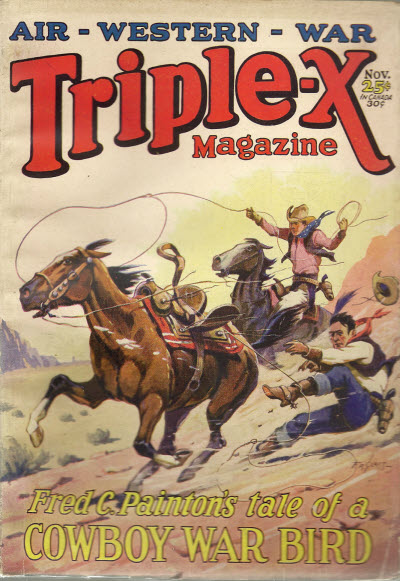 a story from the pen of a prolific pulp author and venerated newspaper man—Frederick C. Painton.
a story from the pen of a prolific pulp author and venerated newspaper man—Frederick C. Painton. of William Barker’s career on two flying fronts reads more like fiction than fact. Born in the prairie province of Manitoba in 1894, he enlisted as a Private in the Canadian Army at the age of 19. He served in the cavalry before transferring to the flying corps. Barker began as a simple private. But he skyrocketed swiftly through all the grades to that of Lieut. Colonel. His training for a pilot was limited to two flights with an instructor. After that he was turned loose to begin piling up an amazing record. On October 27, 1918, he crowned this amazing record with the most astounding aerial feat of the whole war . . . fighting and escaping from a surrounding net of 6O enemy planes at the dizzy altitude of 20,000 feet.
of William Barker’s career on two flying fronts reads more like fiction than fact. Born in the prairie province of Manitoba in 1894, he enlisted as a Private in the Canadian Army at the age of 19. He served in the cavalry before transferring to the flying corps. Barker began as a simple private. But he skyrocketed swiftly through all the grades to that of Lieut. Colonel. His training for a pilot was limited to two flights with an instructor. After that he was turned loose to begin piling up an amazing record. On October 27, 1918, he crowned this amazing record with the most astounding aerial feat of the whole war . . . fighting and escaping from a surrounding net of 6O enemy planes at the dizzy altitude of 20,000 feet.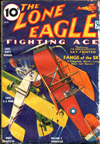
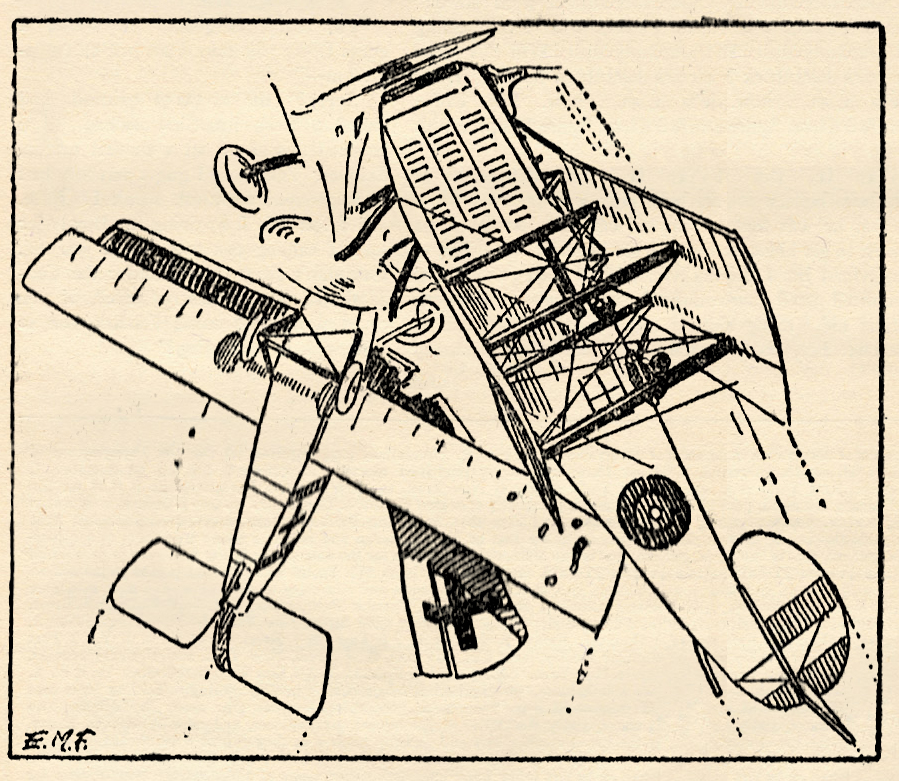
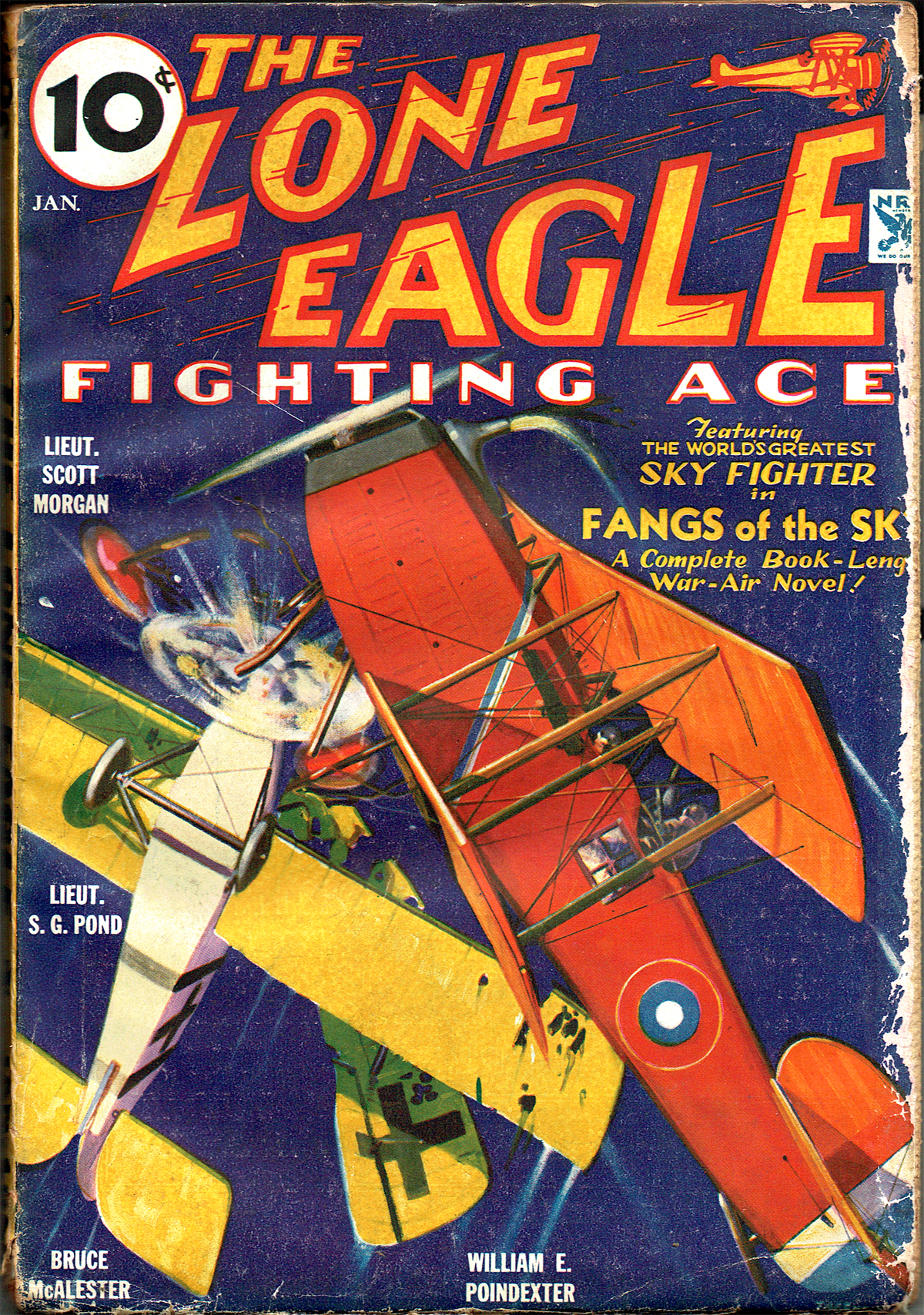
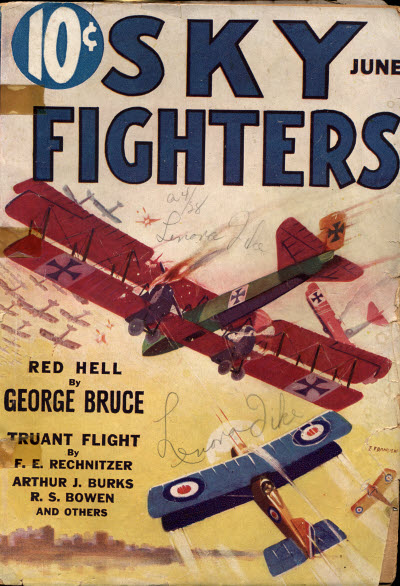 a story by prolific pulpster—Arthur J. Burks! Burks was a Marine during WWI and went on to become a prolific writer for the pulps in the 20’s and 30’s. He was a frequent contributor to Sky Fighters. Here we have a story of Frank Tracy, a strict flight leader who rules his troops with threats of court-martial or other disciplinary action. Tracy uses his methods as a way of keeping his flight safe, but they see him as just hiding behind his flight to save his own hide. As is the case in these situations tempers reach a boiling point! From the June 1933 issue of Sky Fighters, it’s Arthur J. Burks’ “Martinet.”
a story by prolific pulpster—Arthur J. Burks! Burks was a Marine during WWI and went on to become a prolific writer for the pulps in the 20’s and 30’s. He was a frequent contributor to Sky Fighters. Here we have a story of Frank Tracy, a strict flight leader who rules his troops with threats of court-martial or other disciplinary action. Tracy uses his methods as a way of keeping his flight safe, but they see him as just hiding behind his flight to save his own hide. As is the case in these situations tempers reach a boiling point! From the June 1933 issue of Sky Fighters, it’s Arthur J. Burks’ “Martinet.”